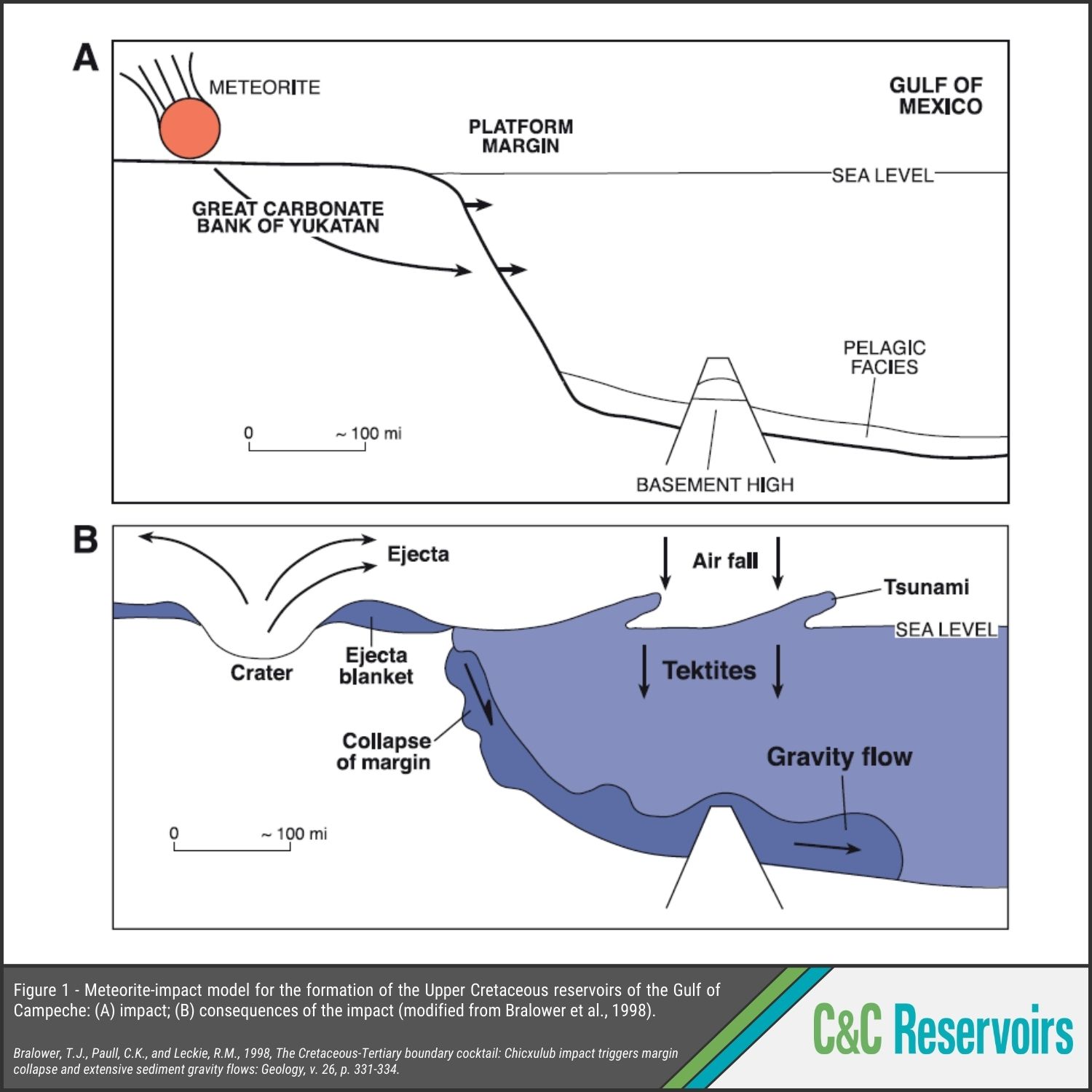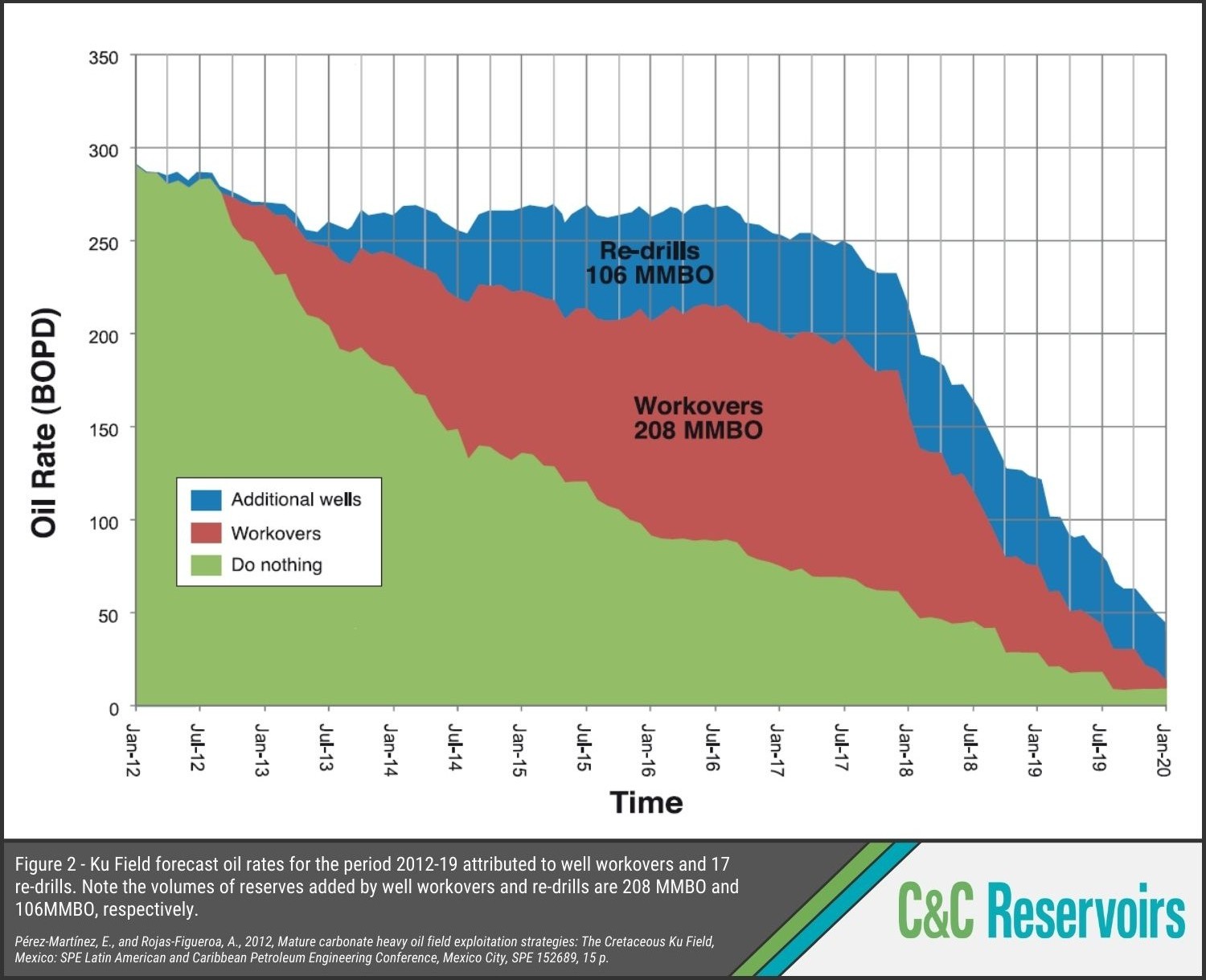The Ku Field
Analogue Spotlight
Situated in shallow water on the Campeche Shelf, the Ku Field came onstream in 1981. With a STOIIP of 5.9 BBO and an EUR of 3.1 BBO, Ku ranks among Mexico’s largest oil fields.
The Upper Cretaceous reservoir consists of carbonate breccia believed to have been formed by the Yucatán meteorite impact (Fig. 1). It owes its extremely high permeabilities of 4-9 D to the well-developed fracture system that connects vugs and intercrystalline pores. This exacerbated water and gas coning at the nearby Cantarell Complex, which experienced unexpected water breakthrough and a sharp production decline. To mitigate similar challenges at Ku, PEMEX applied several lessons at Ku learned from the experience at Cantarell:
- Water-handling facilities were installed early to prepare for unexpected water production;
- Pressure and temperature sensors were fitted to monitor fluid-contact movements;
- Chokes maintained a GOR of 560 SCF/STB to delay gas coning;
- Watered-out wells were recompleted by plugging fractures and isolating the water leg before perforating the upper oil-bearing zones. This is expected to increase ultimate recovery by ~208 MMBO.
These measures succeeded in delaying water breakthrough until 2015, and, together with an aggressive infill drilling, workovers and a nitrogen injection campaign to stem the pressure decline (Fig. 2), cumulative production now stands at an impressive ~50% of STOIIP, demonstrating how careful planning and effective management can sustain a productive reservoir.


